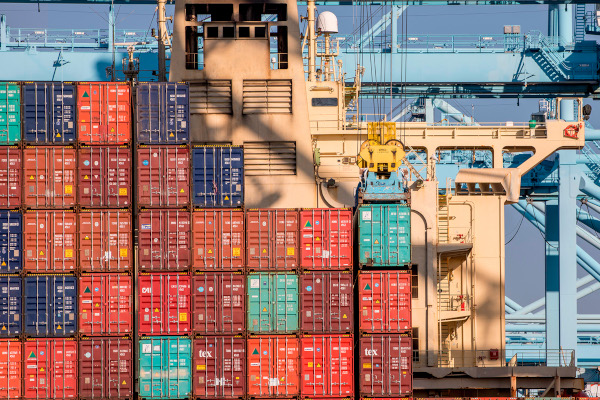United States-bound containerized freight imports saw an annual decline in July, according to data recently issued by S&P Global Market Intelligence.
July imports, at 2.53 million TEU (twenty-foot equivalent units) were off 10% annually, while topping June’s 2.43 million TEU tally by 4%. This marked the 12th consecutive month of annual declines, with the caveat that it represented the slowest rate of decline since September 2022, said the firm. On a year-to-date basis through July, imports are down 15% annually, at 16.29 million TEU.
S&P Global Market Intelligence said that the July decline was paced by a 16% annual decline in consumer discretionary shipments, adding that leisure products, which include toys, were off 25%, coupled with apparel and furniture off 23% and 20%, respectively.
Faring better were shipments of capital goods, which headed up 1% annually, which was driven by a 22% increase in electrical component shipments and a 28% gain in power-generating equipment, including renewables. S&P said that these two categories may reflect increased infrastructure investments in the U.S.
“While this marked the 12th straight month of import declines, the rate of decline is slowing,” said Chris Rogers, head of supply chain research for S&P Global Market Intelligence. “Obviously, things cannot turn positive until they stop being negative. Shipments went into annual growth in August 2020 and continued to grow until November 2021, for a 17-month upcycle, followed by things going sideways for a few months and then starting to head down. The fact that the rate of decline is slowing would suggest we are getting to the end of this downturn.”
And he added that based on trade data, it is at least worth keeping in mind that the economy currently appears to be split into two parts, with consumer goods still being weak, as noted by major retail shippers saying in second-quarter earnings announcements that inventories remain high but are being worked down. Consumers are still troubled, but retailers are confident things will turn around.
What’s more, he added that is reflected in consumer goods data, excluding autos, which points to consumer goods shipments down 18% in July and down 28% year-to-date, led by furniture and leisure products.
“The second part, though, is the industrial economy,” said Rogers. “This is related to companies building new factories with deep supply chains, with components, and building infrastructure. And on that side of the coin, actually, we’re seeing shipments increase annually…only up by 1% for capital goods overall. This is the first time since last September that has happened. It is being led very much by things like electrical equipment, electrical components, and so on. So, I think we’re, we’re on that kind of upswing side in that part of the economy.”
SC
MR


Latest Supply Chain News
- Made in Mexico, manufactured by China
- Retail sales see gains in October, reports Commerce and NRF
- Balancing green and speed: Home delivery insights from the pandemic era
- AdventHealth named top healthcare supply chain by Gartner
- Geopolitical readiness in supply chains: Strategic challenges for leaders
- More News
Latest Podcast

 Explore
Explore
Procurement & Sourcing News
- Made in Mexico, manufactured by China
- Retail sales see gains in October, reports Commerce and NRF
- Geopolitical readiness in supply chains: Strategic challenges for leaders
- With capacity to spare, logistics real estate demand remains subdued
- Tariffs, taxes and trade: The impact of Trump’s reelection on the supply chain
- How to improve demand forecasts for new product families
- More Procurement & Sourcing
Latest Procurement & Sourcing Resources

Subscribe

Supply Chain Management Review delivers the best industry content.

Editors’ Picks




